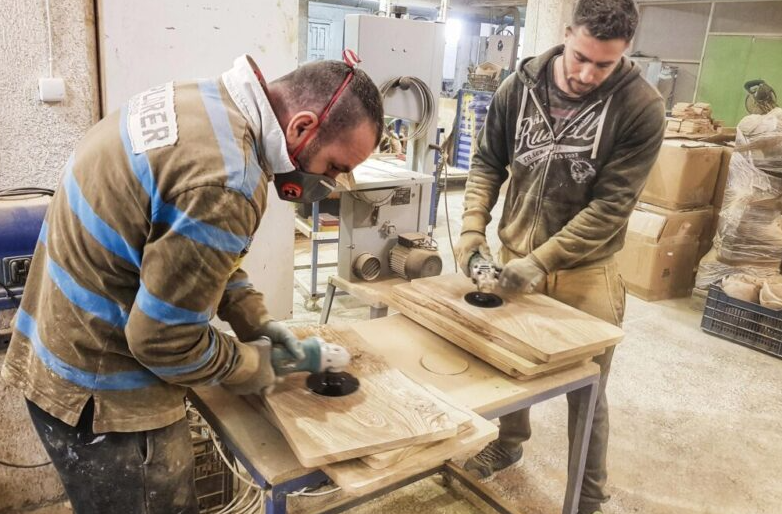Crete, the largest of the Greek islands, is celebrated for its rich history, stunning landscapes, and vibrant culture. Among the island’s many traditional crafts, woodworking stands out as a testament to the skill and creativity of Cretan artisans. For centuries, Cretan woodworkers have been crafting both functional and artistic pieces, blending practicality with intricate design. This guide explores the history, techniques, and enduring appeal of Cretan woodworking, highlighting the unique aspects that make this craft a cherished part of the island’s heritage.
Historical Roots of Cretan Woodworking
Woodworking in Crete has ancient origins, dating back to the Minoan civilization (circa 2000-1400 BCE). The Minoans were known for their sophisticated craftsmanship, and wooden artifacts discovered in archaeological sites reveal their expertise in creating furniture, tools, and decorative items. These early woodworkers used local timbers, such as cypress and olive wood, renowned for their durability and beauty.
Throughout the centuries, Cretan woodworking evolved, influenced by the island’s various rulers, including the Venetians and Ottomans. Each period brought new techniques and styles, enriching the island’s woodworking tradition. Today, Cretan woodworkers continue to draw inspiration from this rich historical tapestry, blending traditional methods with contemporary designs.
Techniques and Materials
Cretan woodworking is characterized by meticulous craftsmanship and attention to detail. Artisans employ a variety of techniques, often passed down through generations, to create their masterpieces.
Carving
Wood carving is a prominent technique in Cretan woodworking. Artisans use chisels, gouges, and knives to carve intricate patterns and motifs into the wood. Traditional designs often include geometric patterns, floral motifs, and scenes from nature, reflecting the island’s natural beauty and cultural heritage. Carved wooden panels are commonly used in furniture, doors, and decorative items.
Joinery
Traditional joinery techniques, such as mortise and tenon, dovetail, and lap joints, are essential in Cretan woodworking. These methods ensure the strength and durability of the pieces without the need for nails or screws. Skilled woodworkers carefully fit and secure each joint, creating furniture and structures that can withstand the test of time.
Inlay and Marquetry
Inlay and marquetry involve embedding pieces of different woods, metals, or other materials into the surface of the wood to create intricate designs. This technique adds a decorative element to furniture and decorative items, showcasing the artisan’s skill and creativity. Cretan woodworkers often use contrasting woods, such as ebony and olive, to achieve striking visual effects.
Finishing
The finishing process is crucial in enhancing the beauty and longevity of wooden pieces. Cretan artisans use natural oils, waxes, and varnishes to protect the wood and bring out its natural grain and color. Traditional finishes are often handmade, using recipes that have been passed down through generations.
Functional and Artistic Pieces
Cretan woodworkers create a wide range of functional and artistic pieces, each reflecting the island’s unique aesthetic and practical needs.
Furniture
Traditional Cretan furniture is known for its sturdy construction and elegant design. Common pieces include tables, chairs, chests, and cabinets, often adorned with intricate carvings and inlays. Many of these items are designed for daily use, combining functionality with artistic beauty. Cretan furniture is also valued for its durability, with many pieces becoming treasured family heirlooms.
Decorative Items
In addition to furniture, Cretan woodworkers craft a variety of decorative items, such as picture frames, mirrors, and wall hangings. These pieces often feature detailed carvings and inlays, making them beautiful additions to any home. Traditional motifs, such as olive branches, grapevines, and marine life, are commonly used, reflecting the island’s natural environment.
Religious Artifacts
Cretan woodworking also plays a significant role in the creation of religious artifacts. Many churches and monasteries on the island boast intricately carved wooden iconostases, altars, and lecterns. These pieces are not only functional but also serve as expressions of faith and devotion, showcasing the artisan’s reverence for their craft and religion.
Preserving Tradition in a Modern World
While modern technology and mass production have transformed the woodworking industry, Cretan artisans remain committed to preserving traditional techniques and craftsmanship. Many woodworkers continue to operate small, family-run workshops, where they produce handmade items using time-honored methods. These artisans often welcome visitors, offering a glimpse into the process of creating their exquisite pieces.
Efforts to preserve Cretan woodworking traditions are also supported by cultural organizations and educational institutions. Workshops, exhibitions, and festivals celebrate the island’s rich heritage, providing opportunities for artisans to showcase their work and pass on their skills to the next generation.
Conclusion
Cretan woodworking is a remarkable blend of functionality and artistry, rooted in centuries of tradition and enriched by the island’s diverse cultural influences. The meticulous craftsmanship, intricate designs, and use of local materials reflect the unique character of Crete and its people. Whether crafting sturdy furniture, decorative items, or religious artifacts, Cretan woodworkers continue to honor their heritage while adapting to the demands of the modern world. Exploring the world of Cretan woodworking offers a deeper appreciation for the island’s cultural richness and the enduring beauty of its artisanal traditions.


